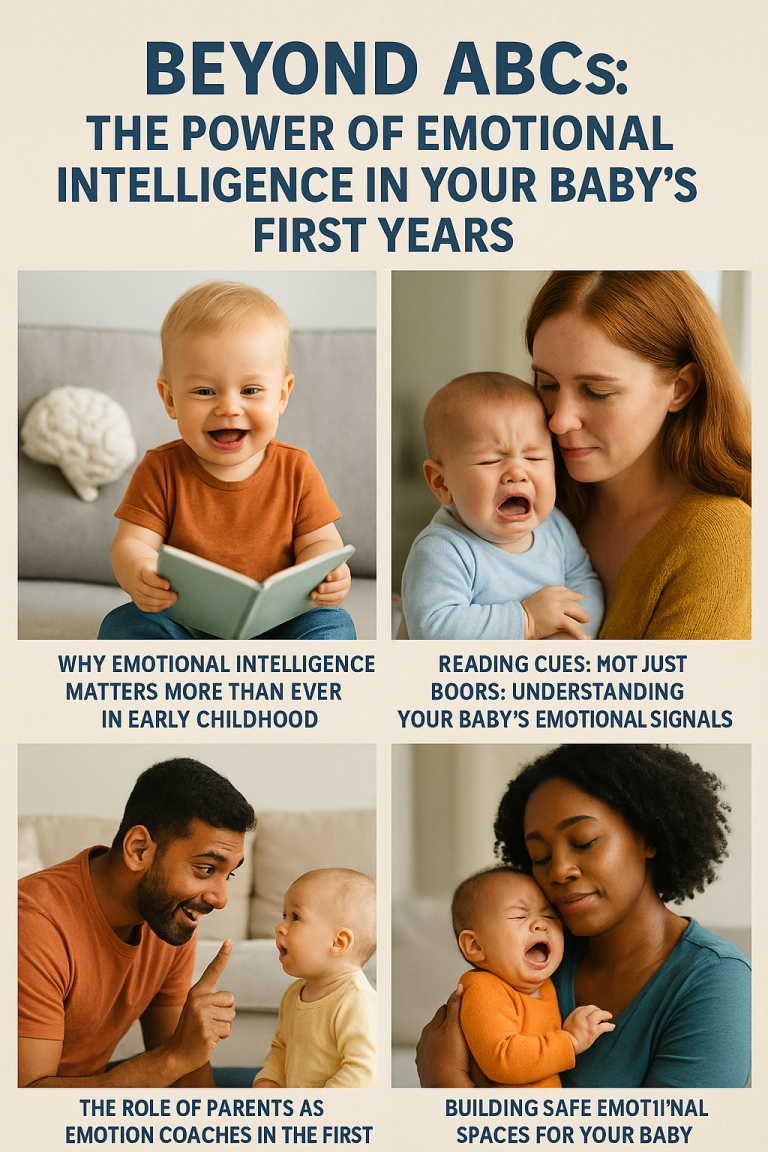
Introduction
Parenting is an immense responsibility, not only in shaping the character of the next generation but also in preserving the world they will inherit. Sustainable parenting is about making mindful choices that reduce environmental impact while fostering a deep connection between children and the planet. From eco-conscious product selections to waste reduction, green living can be seamlessly woven into daily family life. By adopting sustainable habits, parents can create a healthier environment for their children while teaching them the value of stewardship and responsibility.
Eco-Friendly Baby Products & Clothing
One of the first steps toward sustainable parenting is choosing eco-friendly baby products & clothing. Traditional baby items often contain synthetic materials, chemical-laden dyes, and non-biodegradable plastics that contribute to pollution and health concerns. Opting for organic, ethically sourced, and biodegradable products minimizes these risks and supports sustainable industries.
Organic cotton, bamboo, and hemp fabrics are excellent choices for baby clothing, as they are free from harmful pesticides and toxic dyes. Cloth diapers, a sustainable alternative to disposable ones, significantly reduce landfill waste while being gentler on a baby’s skin. Similarly, wooden toys, free from plastic and synthetic coatings, provide a safer and more durable play option.
Parents can also look for certifications like GOTS (Global Organic Textile Standard) and OEKO-TEX to ensure baby items meet environmental and safety standards. Additionally, choosing second-hand clothing and toys through swaps or thrift stores extends the life cycle of products, reducing demand for new production and minimizing waste.
Sustainable Meal Planning for Families
Food consumption has a major ecological footprint, making sustainable meal planning for families an essential part of eco-friendly parenting. By prioritizing locally sourced, organic, and seasonal produce, parents can reduce carbon emissions associated with long-distance food transport and minimize exposure to pesticides.
Batch cooking, meal prepping, and reducing food waste are crucial strategies. Leftovers can be repurposed into new meals, scraps can be composted, and mindful portioning can prevent unnecessary disposal. Opting for plant-based meals a few times a week further reduces environmental strain, as meat and dairy industries contribute heavily to greenhouse gas emissions and deforestation.
Reducing single-use packaging is another impactful change. Buying in bulk, using glass or stainless steel storage containers, and choosing refillable options for pantry staples contribute to a more sustainable kitchen. Teaching children about mindful eating, where they understand the journey from farm to table, fosters appreciation for sustainable food choices from an early age.
Minimalist Parenting & Conscious Consumerism
In a world inundated with advertisements and consumer culture, minimalist parenting & conscious consumerism offer a refreshing perspective. Instead of accumulating an abundance of toys, gadgets, and unnecessary baby gear, parents can focus on quality over quantity, prioritizing multi-functional, durable, and ethically sourced items.
Minimalist parenting emphasizes experiences over possessions. Instead of purchasing the latest trends in children’s entertainment, families can engage in nature walks, storytelling, DIY crafts, and community-based activities. These alternatives encourage creativity, reduce household clutter, and minimize the environmental impact of excessive manufacturing and waste.
Conscious consumerism involves thoughtful purchasing decisions, considering the ethical and environmental implications of each item. Parents can support sustainable brands, prioritize second-hand options, and opt for products made from recycled or upcycled materials. Teaching children the difference between needs and wants cultivates a sense of mindfulness in consumption, reducing materialistic tendencies while reinforcing the value of sustainability.
Green Homes & Non-Toxic Living Spaces
The home environment plays a significant role in a child’s health and ecological footprint. Transitioning to green homes & non-toxic living spaces involves eliminating harmful chemicals, improving energy efficiency, and incorporating sustainable materials.
Air quality is a key factor in non-toxic living. Many household cleaning products, paints, and furniture release volatile organic compounds (VOCs), which can be harmful to children’s developing respiratory systems. Switching to plant-based, biodegradable cleaners, low-VOC paints, and organic fabrics reduces indoor pollutants and fosters a healthier living space.
Energy-efficient appliances, LED lighting, and solar panels contribute to a greener household by lowering energy consumption. Families can also incorporate water-saving techniques, such as using low-flow fixtures, rainwater harvesting, and mindful water use, to minimize waste.
Furnishing a home with sustainably sourced wood, bamboo, or recycled materials ensures a reduced carbon footprint. Parents can also integrate more greenery indoors by growing houseplants, which act as natural air purifiers while creating a soothing environment for children.
Teaching Kids About Environmental Responsibility
The most profound aspect of eco-friendly parenting is teaching kids about environmental responsibility. Children are naturally curious and eager to learn, making them receptive to sustainable habits when introduced early.
Leading by example is the most effective way to instill eco-conscious values. Demonstrating recycling, composting, energy conservation, and mindful consumption normalizes sustainability within the household. Hands-on activities, such as gardening, DIY upcycling projects, and participating in community clean-up efforts, help children develop a tangible connection to environmental stewardship.
Parents can also incorporate eco-friendly storytelling, documentaries, and interactive educational tools to foster a deeper understanding of sustainability. Encouraging children to ask questions, observe nature, and engage in discussions about environmental issues empowers them to make thoughtful, responsible choices as they grow.
Conclusion
Sustainable parenting is a commitment to mindful choices that prioritize environmental stewardship, ethical consumption, and holistic well-being. By embracing eco-friendly baby products & clothing, adopting sustainable meal planning for families, practicing minimalist parenting & conscious consumerism, creating green homes & non-toxic living spaces, and teaching kids about environmental responsibility, parents pave the way for a more sustainable future.
Parenting with sustainability in mind is not about perfection but about making intentional shifts toward greener living. Every small change—whether choosing a bamboo toothbrush, composting food scraps, or teaching a child about the beauty of nature—contributes to a larger, collective impact. Through these efforts, parents can nurture not only their children but also the planet, ensuring a healthier, more vibrant world for generations to come.




